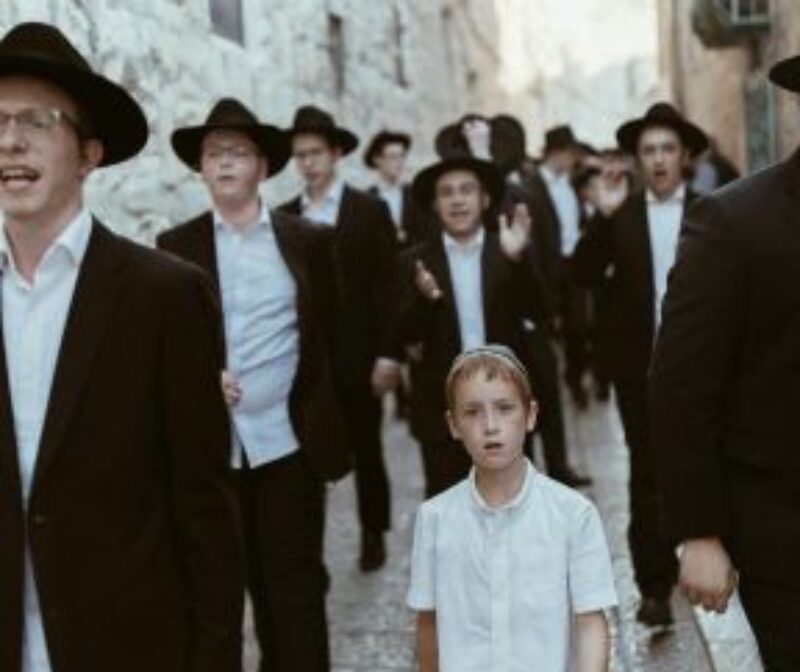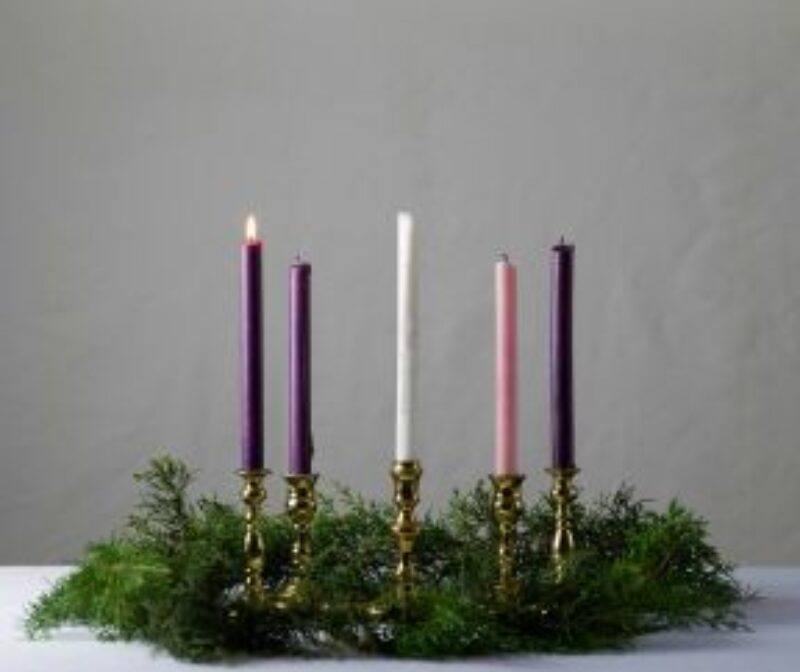What is Advent?
Advent is a time of preparation directing Christian hearts and minds toward remembering the birth of Christ.
What’s the Meaning of Advent?
The word advent means “arrival,” and the four-week Advent season leading up to Christmas Day is a time that Christians are encouraged to spend in wondrous reflection on the miraculous birth of Jesus (his first arrival) and to look forward with hope and expectation to his future arrival, the Second Coming. During Advent season, Christians prepare their hearts for the Christmas Day celebration of Jesus’ birth and posture their thoughts towards the foundational tenets of their faith—love, joy, peace, and hope—all of which Christ brought to Earth when he came to dwell among us.
Each week of Advent is devoted to reflection and meditation on one of these tenets, with each Sunday marking the beginning of the next week’s theme. During worship services, scripture readings and the lighting of Advent wreath candles are used to transition to the new focus for the upcoming week. Ideally, observing Christians will intentionally engage with each theme throughout the week by setting intentions, meditations and prayers, and engaging with others to offer hope, peace, joy, and love.
Engaging others might come in the form of purchasing food and gifts for families in need (many charity and church organizations have “Adopt-a-Family” programs during the holidays), giving to food banks, or praying for and offering compassion to others.
Advent reminds us to be grateful for the awe-inspiring event of the birth of Christ, that God came to be with us, and the miracle of God’s love and grace.
When does Advent begin and how are the traditions observed?
Advent Season begins on the first Sunday in December and continues throughout the month, culminating in the celebration of Christmas. The observance of Advent traditions also begins on this first Sunday, with the lighting of the first candle on the Advent wreath and participating in the first activity associated with an Advent calendar.
Each Sunday to follow, another candle on the wreath is lit. The Sunday before Christmas marks the beginning of the last week of Advent, and the final purple candle is lit. In many Christian churches, this is the final candle, but some traditions call for a fifth candle in the middle of the wreath that is lit on either Christmas Eve or Christmas Day.
Families or individuals who incorporate Advent calendars into their traditions often use this to set aside a short amount of time each day to recenter on the theme of the week and count down another day towards Christmas—whether it be opening another door on the calendar, gifting small trinkets, or hanging an ornament on a Jesse Tree.
Who celebrates Advent?
Advent is a season in the Christian liturgical calendar and is celebrated by many denominations, including Anglicans, Episcopalians, Lutherans, Roman Catholics, Orthodox Christians, Non-denominational Christians, and Methodists.
What are traditions of Advent?
Many Christian communities observe Advent traditions, such as the Advent wreath and Advent calendar, as ways to outwardly express the inward reflections of the Advent season. Advent wreaths can be traced back further than the Middle Ages, when their use was adopted by Christians to symbolize Christ being the “light of the world” and as a symbol of hope. The wreath is formed using evergreen branches, which symbolize the hope of eternal life, and its circular shape represents God’s infinite love.
Advent calendars serve not only as a way to build anticipation and count down the days until Christmas, but offer a daily opportunity to slow down and intentionally reflect on Christ as the embodied and coming Messiah. Calendars are sometimes accompanied by small token gifts, which naturally stoke feelings of anticipation for the arrival of Christmas and symbolize the gifts the Wise Men brought to Jesus after his birth.
What does each week of Advent represent?
First Sunday of Advent: Hope
On the first Sunday of Advent, traditional observance officially begins with the lighting of the first candle, which symbolizes hope. Many Christians anticipate the celebration of Christ’s birth and his Second Coming, both sources of hope and meaning. Because the overarching theme of the Advent season is hope, it is suiting that the first week would begin with this theme.
The candle representing hope is purple, which is a color used to symbolize royalty, as the Christian faith recognizes Jesus as its ultimate king.
For more about hope:
- The First Sunday of Advent: Hope
- Hope outside of Religion (Part 1)
- Hope outside of Religion (Part 2)
- A Practice: Questions to build Hope
Second Sunday of Advent: Peace
On the second Sunday during Advent, the next purple candle, which symbolizes peace, is lit. During this second week of Advent, Christians meditate on Christ’s promise that he brings his people peace. It is also a reminder to be someone who spreads peace to others, and with special intention during this season.
For more about peace:
Third Sunday of Advent: Joy
During the third and penultimate week of Advent, the Sunday lighting of the pink candle represents joy, which is its liturgical color. In the Bible, the angel spoke to the Wise Men, saying, “Do not be afraid, for behold, I bring you good tidings of great joy which will be to all people” (Luke 2:10 NKJV). The anticipation for the celebration of Christmas and of Christ’s ultimate return is a source of joy during this season for Christians, echoing the joy the shepherds must have felt on their own journey to find the newly-born Jesus.
For more about joy:
Fourth Sunday of Advent: Love
On the fourth Sunday in Advent, the remaining purple candle, symbolizing love, is lit. During this final week of Advent, Christians meditate on God’s love—that he sent his one and only son, Jesus, to Earth for us—and what that means for how we should live. Also being purple, this candle leaves us with a foreshadowing of the kingdom of God that is to come in the second arrival of Christ.
For more about love:
- The Fourth Sunday of Advent: Love
- Healthy spirituality: The Focus is Love – Why is Love so Hard?
- Healthy spirituality: The Focus is Love – The Role of Leaders
- A Practice: Digging Deep to Forgive
- A Practice: Small Acts of Love
The White Candle
In some Christian traditions, a white candle is placed in the center of the Advent wreath and is lit either Christmas Eve or Christmas Day. This candle represents the life of Jesus and the fulfillment of the long-anticipated day of celebration. The white also represents the purity and sinless nature of Jesus.
Why should we celebrate Advent?
Advent is an important and powerful ritual that has been observed for hundreds of years, and practicing it can bring us more hope, peace, joy, and love during the Christmas season and beyond. As we spend time in reflection and get swept up in the childlike anticipation of the season, our sense of awe, wonder, and gratitude for God is refocused and renewed. Returning to these simple, yet profound, emotions helps us show more love, peace, joy, and hope with the world around us, reflecting the true meaning of the Advent season.
Continue Exploring

Mindfulness
A Practice: Reflecting on Love and Goodness Towards Others
This practice helps build compassion for the struggles of others by shifting our perspective and imagining how we can offer love.

Emotions
The Balm of Being Loved and Held
How does love contributing to thriving? The practice of the 5 B's of love is explained here.

Spirituality
Rhythms and Rest (Part 1)
Why do we need spiritual practices like Sabbath? Is it enough to just rest? This 2-Part series answers these questions and more.

